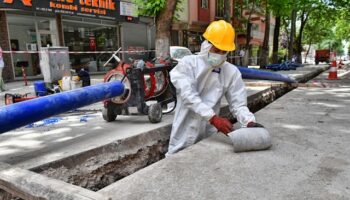As parents, guardians, or caregivers, our paramount concern is the safety and well-being of our young children. The home, where children spend most of their time, should be a sanctuary where they can explore and learn without facing unnecessary hazards.
Let’s explore essential tips and strategies to create a safe environment that minimizes the risk of injuries in young children, promoting a secure and nurturing atmosphere for their growth and development.

1. Childproofing Essentials
Childproofing is the first step toward ensuring a safe home for young children. Begin by getting down to their level and examining your living spaces from their perspective.
Identify hazards such as sharp edges, electrical outlets, cords, heavy furniture that could tip over, and small objects that pose choking hazards. Invest in outlet covers, edge bumpers, cabinet locks, and safety gates to prevent access to hazardous areas.
2. Securing Furniture and Appliances
Unsecured furniture and appliances can pose serious threats to young children. Anchoring heavy furniture like bookshelves, dressers, and TV stands to the wall will prevent accidental tipping.
Ensure appliances, such as microwaves and ovens, are safely secured or placed out of reach. Keep cords from electronic devices and blinds out of children’s grasp to avoid strangulation risks.

3. Maintaining a Clean and Tidy Environment
Maintaining a clean and organized home is aesthetically pleasing and contributes to child safety. Regularly tidy up toys and other items to prevent tripping hazards.
In the bathroom, keep toiletries and cleaning products out of children’s reach, and consider installing toilet lid locks to prevent drowning incidents.
4. Water Safety Measures
Drowning is one of the leading causes of accidental death in young children. To prevent such tragedies, install child-proof pool fencing with self-latching gates if you have a swimming pool.
Never leave children unattended near water, whether in a bathtub, a bucket of water, or a pond in the backyard.
5. Staircase Safety
Staircases can be especially dangerous for toddlers and young children. Install safety gates at both the top and bottom of the stairs to keep them from climbing unsupervised.
Ensure handrails are securely fastened and in good condition. You may have a premises liability case on your hands if your yard/pool is in unsafe or hazardous condition. In this case, you may want to speak with a personal injury attorney in West Palm Beach for more information.
6. Fire and Carbon Monoxide Safety
Be prepared for emergencies by installing smoke detectors and carbon monoxide alarms on each floor of your home. To make sure these gadgets are operating properly, check them frequently.
Have a fire escape plan and conduct practice drills with your family to ensure everyone knows what to do in case of a fire.
7. Kitchen Safety
For young children, the kitchen can be dangerous.. Use stove knob covers to prevent them from turning on burners accidentally. Keep sharp objects and hot pots out of their reach. While cooking, use back burners and turn pot handles inward to avoid accidental spills.

Conclusion
Creating a safe environment for young children requires careful planning and diligence. Childproofing your home, securing furniture and appliances, and preventing drowning and fire incidents are essential to ensure a haven for your little ones.
Moreover, maintaining cleanliness and educating children about potential hazards improve their safety and well-being.
By implementing these measures, you can create a secure and nurturing home that allows children to explore and learn, free from unnecessary risks of injuries.
Keep being AllDayChic!







